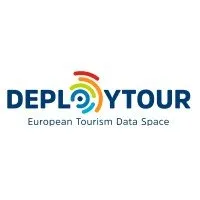The Map of Data Spaces for Environmental Sustainability
Table of Contents

The Value of Data Spaces for Sustainability
At Libelium, we actively work on these fronts, making sure that every step forward strengthens our mission to connect, empower, and transform the cities and communities of tomorrow.
Data spaces are a key tool to better plan territories, adapt to climate change, optimize mobility, manage tourism, and protect critical infrastructure.
AI, Democratization, and Federation Are Transforming Europe
The future of data spaces is built on three main pillars:
Artificial Intelligence Serving Data
No-Code and Low-Code Tools
European Federation of Data Spaces
To automate processes, generate predictive insights, and optimize resources in real time.
Tools that democratize access to technology and enable non-specialist technical personnel to configure data flows and governance rules in a simple, visual way.
Through initiatives such as DOME Marketplace or Citcom.AI, the European Union promotes a common market for cloud, edge, and AI solutions.
Libelium and Its Role in Data Spaces
At Libelium, we don’t just provide IoT technology or data platforms, we co-create digital ecosystems that help cities move from raw data to intelligent decision-making.
We lead the business line of data spaces and digital twins, acting as an integrator and strategic partner for public administrations, research centres, and companies.
Our vision is clear: a data space is not just a technical architecture, but a shared infrastructure that generates collective value, where interoperability, governance, and sustainability are just as important as sensors or algorithms.

Real Use Cases of Data Spaces
DEPLOYTOUR – Smart and Sustainable Tourism
What does it do? Develops the European Tourism Data Space (ETDS) to enhance competitiveness, sustainability, and resilience in the EU tourism sector.
Objective: Improve access to fragmented tourism data, support the digital and green transition of SMEs and tourist destinations, and promote innovative practices.
Locations: Pilots in Andalusia and the Canary Islands (Spain), Paris (France), Syros Island (Greece), Lapland (Finland), and the Alpine regions (Slovenia and Austria).
How does it work? By developing interoperable data spaces that collect and share key tourism information, integrating initiatives like DATES, Gaia-X, and SIMPL.
Shared data: Visitor behaviour and preferences, transport, accommodation, events, infrastructure, environmental impact, cultural heritage, and more.
Use cases: Decision-making support for tourism managers (both public and private), focusing on sustainability, resilience, competitiveness, cultural heritage, and the MICE industry.
SENSE – Urban Virtualization and Citizen Participation
What does it do? Strengthens the sense of urban belonging through virtual environments that replicate real cities within the European Smart Cities initiative.
Objective: Enrich urban life by connecting citizens and authorities through immersive 3D experiences that integrate social, architectural, and environmental dimensions.
Locations: Cartagena (Spain) and Kiel (Germany).
How does it work? By creating interconnected digital environments using Virtual Reality, the metaverse, and European interoperability standards.
Shared data: 3D models, IoT data, urban planning, public transport, infrastructure, and other urban datasets.
Use cases: Urban virtualization to enhance citizen engagement, urban planning, infrastructure resilience, environmental awareness, and mobility.
Geo4Water – Resilience Against Extreme Water Events
What does it do? Promoted by European Data Space for Smart Communities (DS4SSCC-DEP) initiative, this data space is focused on urban resilience to extreme water events (floods, heavy rainfall) driven by climate change.
Objective: Improve urban water management and disaster response through the integration of geospatial, environmental, and infrastructure data.
Locations: Valencia and San Javier (Spain), Oslo (Norway), and Donegal (Ireland).
How does it work? By creating a data space that fuses satellite imagery, IoT sensors, weather data, and aerial recordings.
Shared data: Flood maps, water pollution, infrastructure damage, urban resilience, and historical event data.
Use cases: Supports decision-making in urban planning, infrastructure monitoring, and damage assessment, enabling the development of digital twins for future resilience.
LDT-DS (Local Digital Twins Dataspace)
What does it do? Creates a common infrastructure to share high-quality local data and develop interoperable digital twins.
Objective: Enable collaborative data use to address challenges such as climate change, circular economy, or zero pollution, while respecting data sovereignty.
Locations: Granada, Las Rozas, Cartagena, Málaga, and Valencia (Spain).
How does it work? By developing FAIR data spaces (Findable, Accessible, Interoperable, Reusable) that connect data, algorithms, and applications across multiple sectors.
Shared data: Water and energy consumption, transport, waste, parking, IoT sensor data, and more.
Use cases: Environmental management and smart urban planning, sustainable mobility, low-emission zone simulation, and environmental impact assessment.
SC-DIXAE – Data Space for Urban Cybersecurity
What does it do? Combines cybersecurity, smart cities, and data spaces to prevent and respond to digital threats in urban environments.
Objective: Create a trusted ecosystem to share and analyze cyber threat data, strengthening cities’ digital resilience.
Location: Pilot in Avilés (Spain).
How does it work? Through a secure digital infrastructure that ensures sovereignty and control over urban cybersecurity data.
Shared data: IT inventory, access logs, vulnerabilities, incidents, IoT networks, traffic, security protocols, software updates, among others.
Use cases: Risk and vulnerability assessment, digital disaster recovery planning, incident management, and enhanced security in smart cities.
BeatTheHeat – Solutions for Urban Heat Islands
What does it do? Promoted by European Data Space for Smart Communities (DS4SSCC-DEP) initiative, this data space addresses the urban heat island problem exacerbated by climate change by providing data-driven solutions to urban managers, improving city health and resilience.
Objective: Enhance urban health and resilience by offering data-driven tools to city decision-makers.
Locations: This collaborative project involves three cities: Cartagena (Spain), Naples, and Taranto (Italy), all of which are affected by rising temperatures and frequent heat waves.
How does it work? The project integrates various data sources—weather forecasts, satellite imagery, IoT sensors, and urban maps—into a shared data ecosystem.
Shared data: The BeatTheHeat data space generates high-value datasets, including shade maps, thermal comfort maps, UHI (Urban Heat Island) maps, and pollution maps, to inform decisions on urban planning, mobility, and climate mitigation efforts.
Use cases: Decision-support services for city managers, providing high-value data to improve sustainability and health outcomes. Aligned with the EU Green Deal’s goals for urban resilience and climate adaptation, it enables cities to identify heat islands, quantify heat retention, and assess impacts on nighttime temperatures.
Change won’t come from doing more of the same.
It will come from looking where others haven’t. From connecting dots that once seemed unrelated. From unlocking dormant data and transforming it into better experiences, smarter decisions, or innovative solutions.
Data spaces are not just another EU policy. They are the seed of new business models yet to be imagined. And if you know how to read between the lines, the future is full of unclaimed opportunities.
Maybe the next big startup won’t be born in a garage, but in a shared dataset. And maybe you’ll be the one to launch it.
Behind the Change.
Beyond the Challenge.

